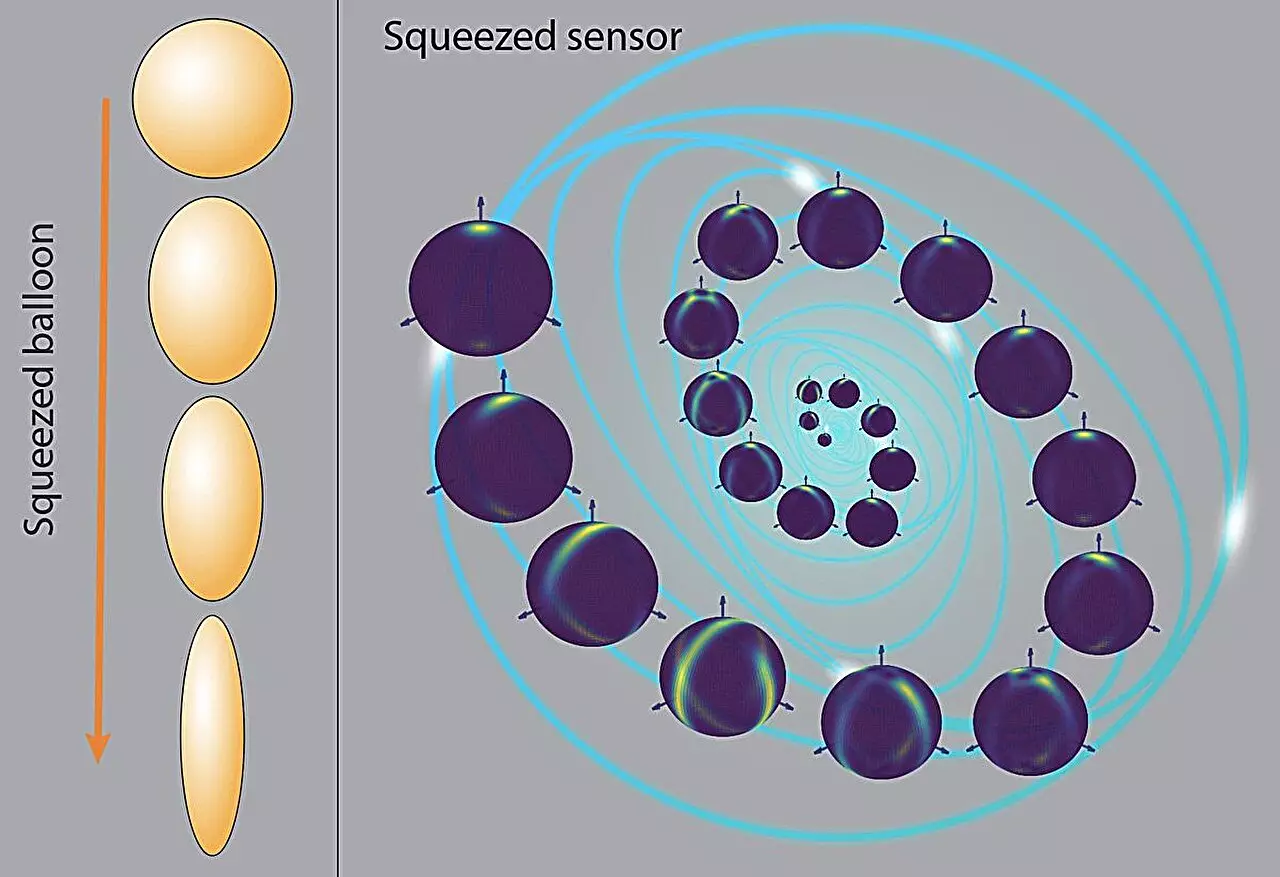Quantum physics continues to challenge our conventional understanding of the universe, often revealing phenomena that appear counterintuitive to classical physics. One such phenomenon is quantum squeezing, a fascinating theoretical concept that allows for the manipulation of uncertainty in quantum systems. This article delves into the essence of quantum squeezing, its applications, recent research advancements, and its implications for future technologies.
Understanding Quantum Squeezing
At its core, quantum squeezing refers to a trade-off mechanism involving uncertainty in two correlated variables. To illustrate this concept, consider the analogy of a balloon. When one side of the balloon is compressed, it stretches and expands in other directions, highlighting how squeezing one variable—such as the position of a particle—results in increased uncertainty in a related aspect, like its momentum. This interplay obeys the principles set forth by Heisenberg’s uncertainty principle, which posits that the more precisely one variable is measured, the less precisely the related variable can be known. Interestingly, while the total uncertainty remains invariant, quantum squeezing enables an enhanced precision in measuring one specific variable by redistributing uncertainty.
Applications in Precision Measurement
The practical implications of quantum squeezing are substantial, particularly in fields demanding exactitude. For instance, atomic clocks, which rely on the oscillation of atoms for timekeeping, benefit greatly from the application of squeezed states. By reducing noise in the measurement of atomic position, these clocks can achieve unprecedented levels of accuracy. However, the challenge is magnified when multiple variables must be measured simultaneously, as is often the case in complex quantum systems.
Recent research has made significant strides in understanding how quantum squeezing can facilitate enhanced measurement precision in multi-variate systems. An article published in *Physical Review Research* by Tohoku University’s Dr. Le Bin Ho explores these complexities, proposing a method to bridge the gaps in previous attempts to analyze measurement precision under practical conditions.
Dr. Ho’s study investigates an intricate setting where a three-dimensional magnetic field interacts with an ensemble of two-level quantum systems. In ideal conditions, the measurement accuracy can approach theoretical limits. However, past research has encountered difficulties in real-world applications, particularly in realizing full entanglement conducive to precision.
The findings from Dr. Ho’s research indicate a clear path forward. By unlocking the complexities of measurement strategies reliant on quantum squeezing, the research aims to optimize the parameters needed for achieving maximum measurement precision. As Dr. Ho noted, this understanding is pivotal, as it opens avenues for technological innovations across multiple sectors.
The potential applications of enhanced measurement precision are vast. In the fields of imaging and sensing, quantum technology could yield sharper and more detailed images, paving the way for developments in quantum radar systems capable of detecting objects with remarkable accuracy. Additionally, improvements to atomic clocks may carry significant ramifications for navigation technologies, such as GPS, where every millisecond counts.
Moreover, the health sector stands to benefit from these advancements, particularly in biophysics and medical diagnostics. Enhanced imaging techniques, like MRI, could lead to earlier disease detection through improved sensitivity in molecular and cellular measurements. The integration of advanced sensing technologies could transform biosensitivity, allowing for the early identification of biomarkers associated with diseases.
While promising, the implications of Dr. Ho’s research extend beyond the immediate applications. By deepening our understanding of quantum squeezing mechanisms, this work contributes to the foundational knowledge necessary for the next wave of advancements in quantum technologies. Looking towards the future, Dr. Ho aims to explore the effects of various types of noise on measurement precision, which could further enhance the robustness and applicability of quantum systems.
Quantum squeezing is not merely an abstract concept; it represents a frontier in our quest to manipulate and measure the fabric of reality with unprecedented precision. The evolution of this technology could usher in a new era, one defined by breakthrough innovations in scientific research, healthcare, and everyday technology.

